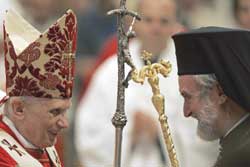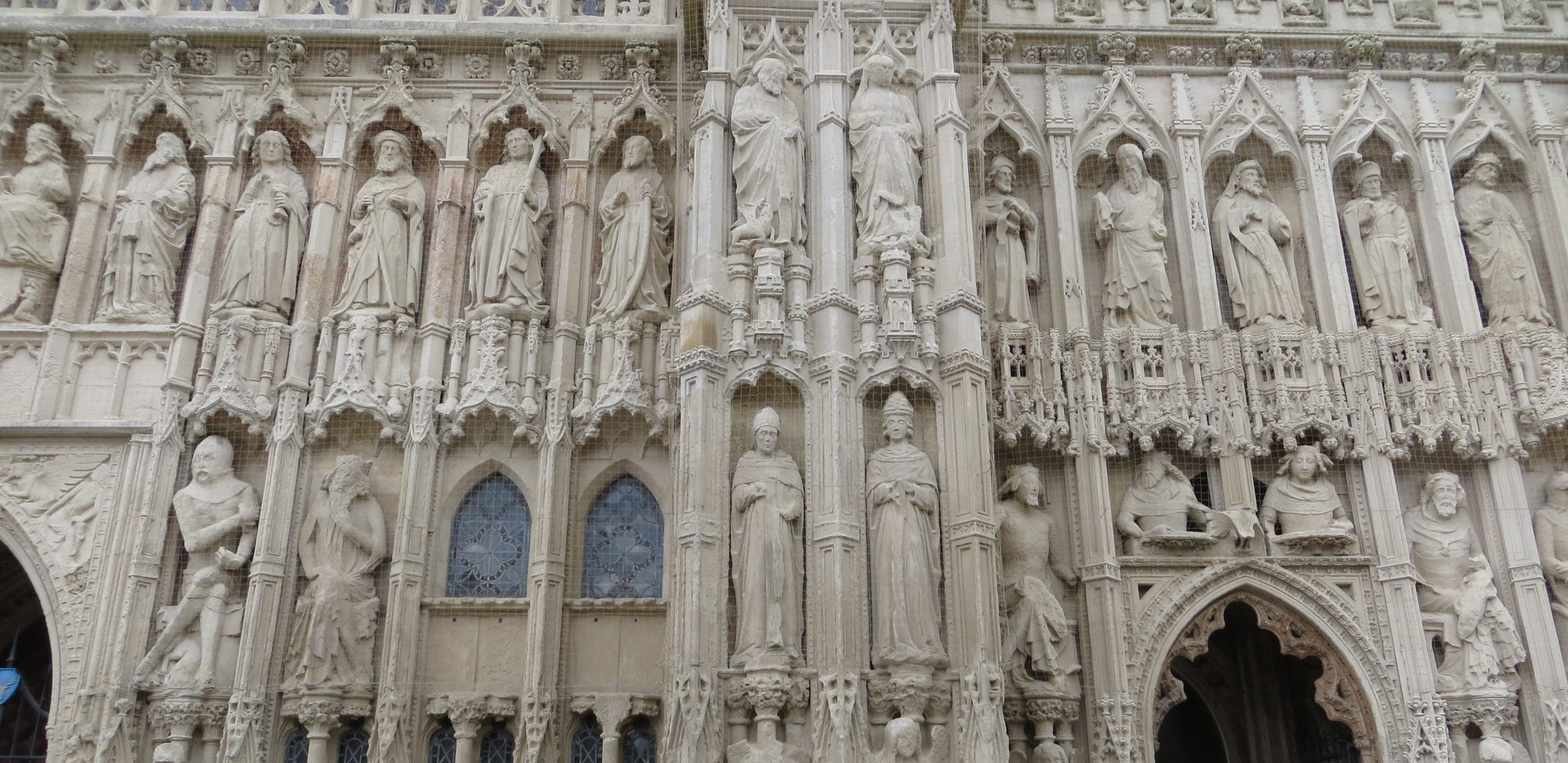
Amy Welborn has started covering Pope Benedict” visit to the Ecumenical Patriarch.
The Vatican has posted details of the services to be celebrated:
The Divine Liturgy begins with an invocation of the Holy Trinity: â??Blessed be the kingdom of the Father and the Son and the Holy Spiritâ?¦â??. Three litanies follow, a longer one and two shorter ones, which invoke the Lordâ??s mercy upon the whole world and the entire Church. Mention is made of the Church, her members and all those in need. These litanies always include an invocation to the Mother of God, who intercedes for everyone and for the Holy Church. After the second litany the christological hymn, â??Only-Begottenâ?? is sung; this is an ancient liturgical hymn that summarizes the principal dogmas of the Christian faith: the Trinity, the Incarnation of the Word of God, the divine maternity of Mary, the salvation that is bestowed on us by Christâ??s passion, death and resurrection. There follows the â??Small Entranceâ??. In a solemn procession, the priest and the deacon take the Gospel from the altar, show it to the faithful and set it again on the altar, in order to indicate the beginning of the proclamation of the word of God: originally this was the entrance procession. Before the readings the Trisagion is chanted: â??Holy God, Holy Mighty, Holy Immortalâ?¦â??.
The third part of the Divine Liturgy is the liturgy of the faithful, in which those who are baptized participate fully. It begins with the â??Great Entranceâ??, the procession with the bread and wine towards the altar. The choir sings the hymn: â??We who mystically represent the Cherubimâ?¦â??, another ancient liturgical text in which the Church of heaven and earth is united in praise and thanksgiving to God for his gifts. The priest incenses the altar, the church, the gifts and the faithful, all of which are icons of Christ. He then solemnly takes the paten and the chalice, and after asking the Lord to remember all those who have been commemorated and the whole Church, he sets them on the altar and covers them with the veil. The priest then recites for himself and the whole Church the words of the Good Thief from his cross: â??Remember me, Lord, in your Kingdomâ?¦â??. The gifts, a symbol of Christ, the Lamb who was slain, are then placed on the altar, as if in the tomb from which, after the consecration or sanctification, the life-giving Body of Christ will be given to each of the faithful. After the entrance, litanies are sung, the sign of peace is exchanged, and the Nicene-Constantinopolitan Creed is recited. There follows the anaphora of Saint John Chrysostom, which has a structure similar to that of the other anaphoras of the Eastern and Western liturgies: an initial trinitarian dialogue, Preface, Sanctus, anamnesis, institution narrative, epiclesis, intercessions and conclusion.
This is followed by the Our Father, the breaking of the bread and communion. Before communion the priest pours some boiling water (called the zéon) into the chalice as a symbol of the outpouring and presence of the Holy Spirit, as well as a sign of the life which comes from communion in the living and life-giving Body and Blood of Christ himself.
The Ecumenical Partriachate has set up a website to cover the Pope’s Apostolic journey. There will be no visit to the Theological School of Halki that the Turkish government has kept closed in defiance of the Turkish constitution’s defence of minorities and of religious freedom.
